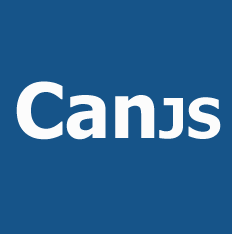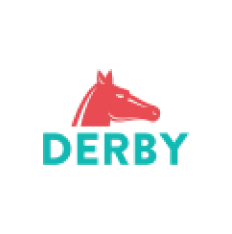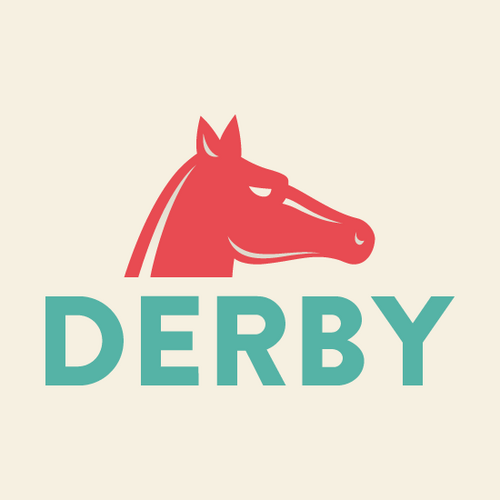Compare Products

|

|
Features * CanJS is flexible. Unlike other frameworks, it's designed to work in almost any situation. You can readily use third party plugins, modify the DOM with jQuery directly, and even use alternate DOM libraries like Zepto and Dojo. CanJS supports all browsers, including IE8.
* CanJS is powerful. Create custom elements with one and two-way bindings. Easily define the behavior of observable objects and their derived values. Avoid memory leaks with smart model stores and smart event binding.
* CanJS is fast. It is only about 20k. Its live-binding updates only what needs to be updated without requiring a "diff".
* CanJS is friendly. Our fulltime and core team are extremely active on gitter chat and on the forums and always wanting to help.
|
Features * Realtime collaboration: Effortlessly sync data across clients and servers with automatic conflict resolution powered by ShareJS's operational transformation of JSON and text.
* Server Rendering: The same templates can be rendered to HTML in the browser or on the server. This means you can have fast page loads, search engine support and even use the same templates to render emails.
* Components and View bindings: Organize your code into Components with designer-friendly HTML templates.
Easily specify live bindings between the view and model so that when data changes, the view updates instantly.
* Modular: DerbyJS is composed of several standard node.js modules. Mix and match your own code, community modules and DerbyJS functionality with standard tools like npm and browserify.
|
LanguagesJava Script |
LanguagesJava Script |
Source TypeOpen
|
Source TypeOpen
|
License TypeMIT |
License TypeMIT |
OS Type |
OS Type |
Pricing
|
Pricing
|
Product Comparison
JavaScript
Javascript frameworks and libraries
CanJS - is an open source lightweight JavaScript model view view-model (MVVM) framework library that enables the development of complex web applications. It is licensed under the MIT license which means the library can be used at anytime for any purpose. CanJS is a flexible framework that is designed to develop applications easily and quickly. It supports most all of its MVC architecture through the use of plug-ins.
CanJS is a very fast framework and is also easy to use. CanJS focuses on the client side structure which means this framework’s focus is more about the client's usage. CanJS provides detailed documentation that can be found on their website. There are also some blogs that cover CanJS and its features. CanJS provides all the structure of the MVC architecture. It includes templates with routing support, and binding. CanJS supports other JS framework/libraries namely Mootools, YUI, jQuery, Dojo, and many more. It also has a rich set of extensions and plugins.

DerbyJS - is an model view controller (MVC) application framework designed for ease in developing real time, collaborative applications that run in Node.js and standard modern browsers. DerbyJS is an open source framework and just like CanJS or some other popular Javascript frameworks, it also is under the terms of the MIT license. It can be used anytime depending on the developer's need. DerbyJS is also a cross platform framework and it runs well on the Windows platform. For other platforms like MAC OSX and Linux a virtual machine is required in order for DerbyJS to run.
DerbyJS is also known as a full stack framework for writing modern websites and web applications. DerbyJS features a data synchronization library called Racer that synchronizes data between browsers, servers, and the database. DerbyJS uses a single page application structure which means same routes are used on the client and the server. The motivation of DerbyJS is to offer developers flexibility while removing the requirement for what authors of other frameworks call "glue code". DerbyJS also capitalizes on the relationship between server-side JavaScript and data storage to make something attractive to server side and client side developers.
Comparison of both technologies
Free and Open Source - Both the CanJS and DerbyJS frameworks are free and open source and are under the terms of the MIT license. Using these technologies will allow you to build web applications without worrying about payments.
Browser Compatibility - Both JS frameworks are compatible with most common and updated browsers such as Google Chrome, Mozilla Firefox, Safari etc. However both frameworks do not support the older versions of Internet Explorer browser.
Performance - CanJS is a powerful framework. It creates custom elements with one and two way bindings. It easily defines the behavior of objects and their derived values. It also avoids memory leaks with model stores and smart event binding. DerbyJS doesn't offer these kind of modules. Also, CanJS's app size makes it more powerful compared to other frameworks. CanJS also prevents memory leaks which is a very good feature to have.
Portability - CanJS runs well on most operating system namely, Windowns, Linux, Mac OSX. Moreover, any operating system that can run JS scripts, can in all probability run CanJS. This is opposed to DerbyJS which is recommend to be used on a Windows operating system because they are still currently developing a nix environment. To use DerbyJS on other operating systems a virtual machine (VM) is required. Examples of VM that can be used are VirtualBox, or tools like Vagrant or Docker.
Flexibility - Unlike in DerbyJS which is specifically used for Node.js, CanJS is designed to work in almost any situation. Integration of other JS frameworks can be easily done and third party plugins can be easily modified and used.
Documentation – Both frameworks provide detailed documentation which is available on each one’s respective website. They provide easy and downloadable files for setting things up, and sample code on how to implement built in methods and customization making it very easy to get started. Tutorials can also be found on blogs, forums, Github, StackOverFlow, and more.
Support - CanJS has more support compared to DerbyJS. CanJS has a core team that offers support through chat and some forums that can help developers with their problems. Unlike in DerbyJS which has much less support of this kind.
Structure - DerbyJS is composed of several standard node.js modules. Developers can easily mix and match code, modules, and DerbyJS functionality with standard tools like npm. DerbyJS also organizes your code into components with friendly design HTML templates. It easily specifies live bindings between the view and model so that when data changes, the view updates instantly.
Server Rendering - When it comes to server rendering, Derby gets the upper hand. It makes it possible for the same templates can be rendered to HTML in the browser or on the server. This means you can greatly reduce page load time, it also has support on search engines and it even uses the same templates to render emails. One thing that makes a web application design important is that every application should load as fast as it can.
Conclusion
To sum up, CanJS is a better framework than DerbyJS. There's a lot of advantages in using CanJS but the main reason is performance. CanJS performs way better than DerbyJS and is not limited only to a specific JS framework but rather can be integrated with most known JS frameworks. There’s no doubt that CanJS has a greater advantage and now has the upper hand in terms of technology comparison, but we will still expect DerbyJS to make waves because it is also starting to be used more and more in building web applications. The info above is just some of the basics on how these two technologies work, but if you want to know more a you can find more details on their websites or on many blogs that discuss these two frameworks.
Compare Products
Select up to three two products to compare by clicking on the compare icon () of each product.
{{compareToolModel.Error}}
{{CommentsModel.TotalCount}} Comments
Your Comment